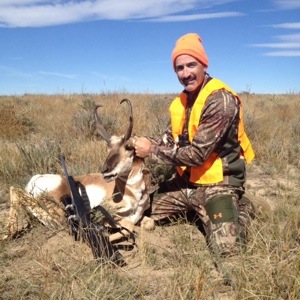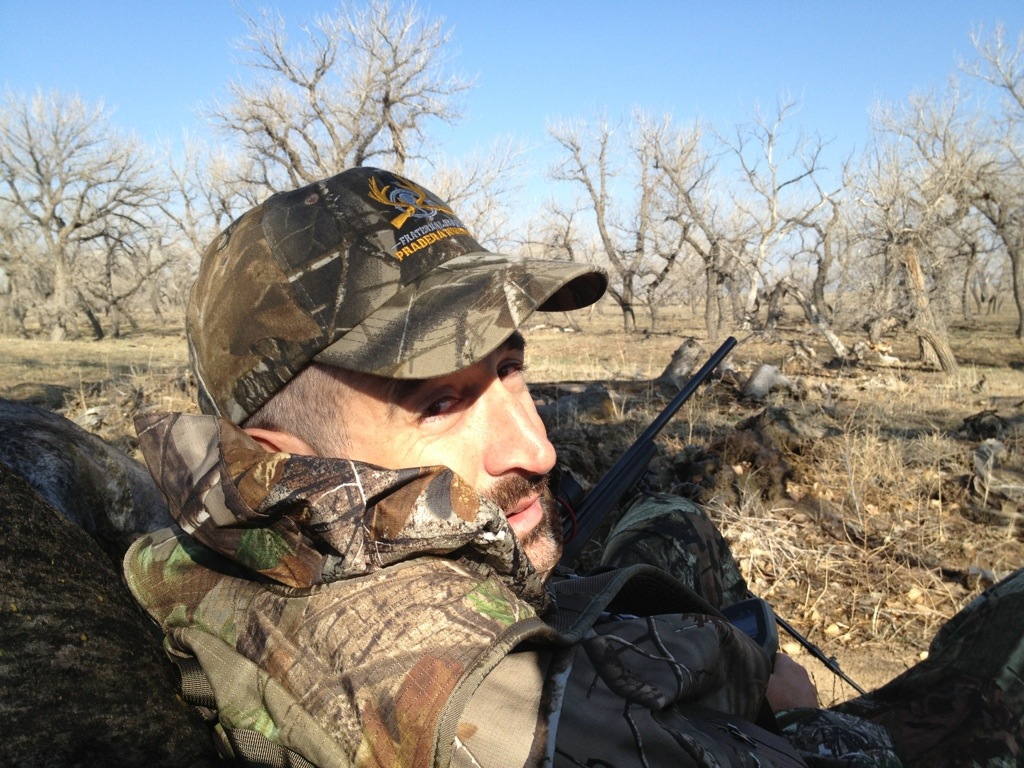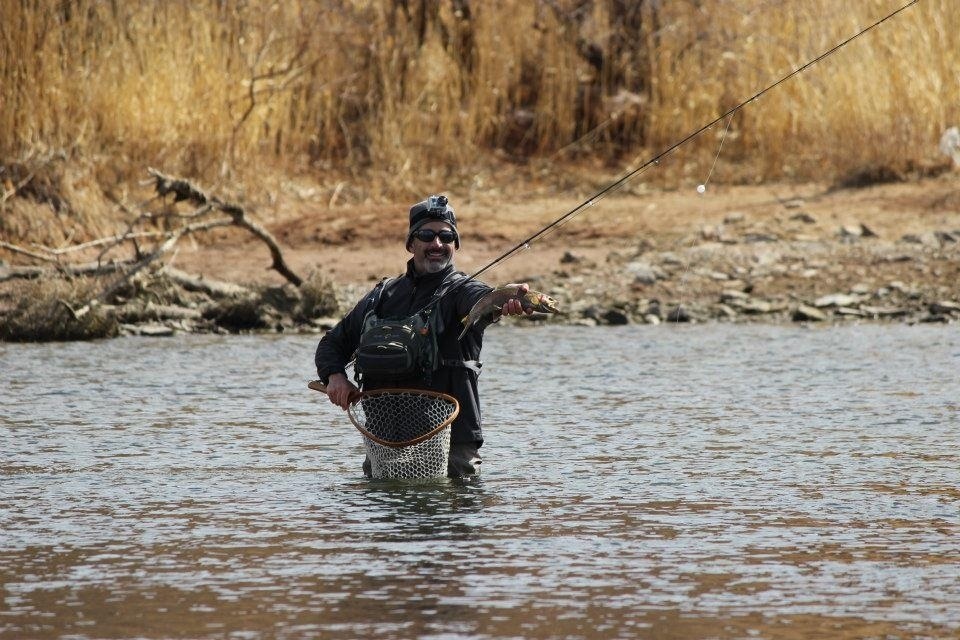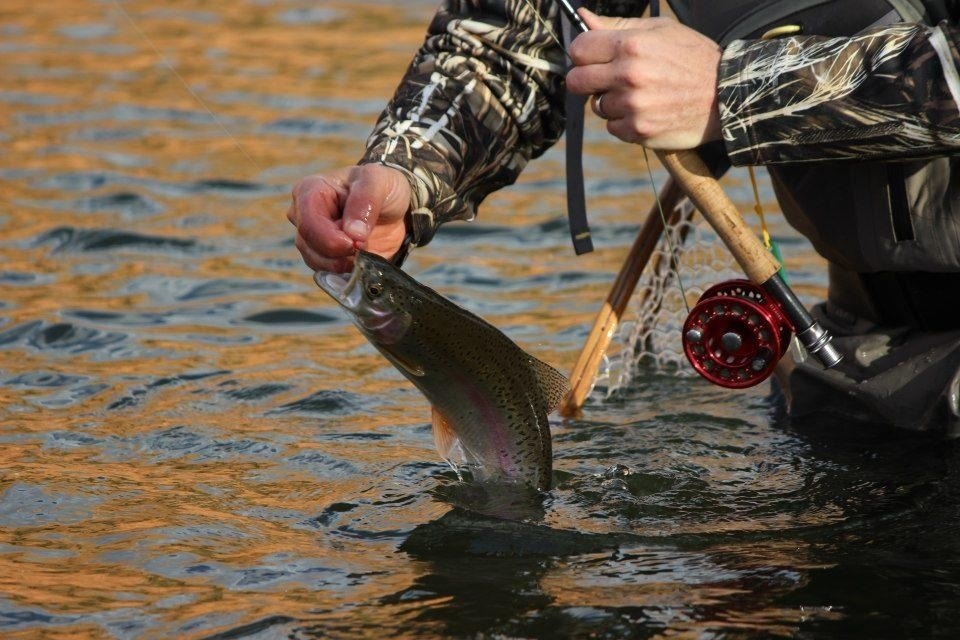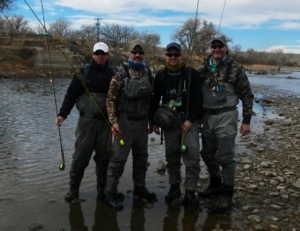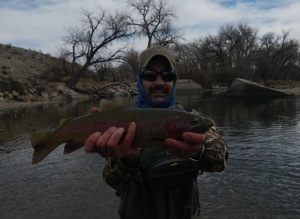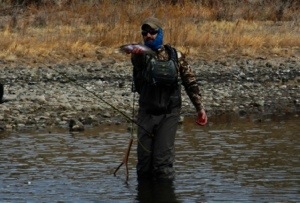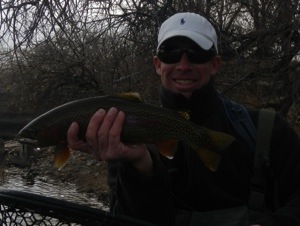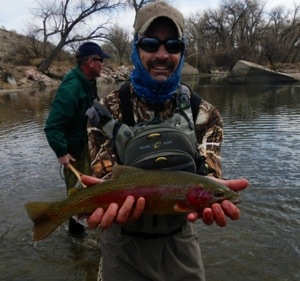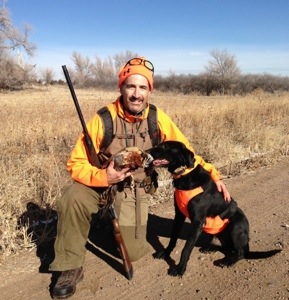I grew up watching Jimmy Houston, Hank Parker, Roland Martin and Bill Dance. These television personalities became my mentors as my family and friends did not fish or hunt. It was relatively easy to learn to fish. My hometown of Swampscott, Massachusetts had half-dozen ponds that were untouched and loaded with bass. I could walk the water with a variety of lures and catch fish. The ocean was in close proximity, so surf-fishing became a regular activity as I got older. Thanks to Mr. Tom Mann, I was able to participate in a few tournaments down south. While I did not have success in these events, it certainly fueled my passion for continued involvement in the outdoors.
Learning to hunt was not effortless as extensive firearm training is vital before you can enter the field. Unfortunately, that guidance was not readily available in the suburbs of Boston, so I had to suppress my desire to participate in the sport for another fifteen years.
In my late twenties, my good friend Scott Tynan and his pals in Michigan introduced me to rabbit hunting. The training was brief and clear; keep the shotgun barrel pointed away from your fellow hunters, and don’t shoot the dogs. Scott’s friends taught me how to clean my rabbits, and an old cookbook provided the recipe for my first stew. This introduction was only a teaser as there seemed to be an invisible barrier prohibiting my continued involvement.
A job took my family to Colorado in the winter of 2008. Soon after my arrival, my buddy Bob Coyle, offered to help me purchase my first shotgun. The Google search engine is an important tool when seeking out what to do next. I was thrilled to discover that there is a local upland preserve & sporting clays range less than thirty minutes from my house. I bought a membership, obtained some tutelage from a local professional and started practicing.
In the summer of 2010 I completed my hunter safety course, and later that year, adopted my gundog Pride. Over the last three years, we have regularly hunted pheasants in Eastern Colorado and Kansas. My friend, Chad Cadwell, has graciously invited me to duck hunt with him on his prodigious lease in Weld County. I have put in for big game tags each year but have come up short; until 2013. With permission from my friend Bob Cage, I applied for tags on his ranch in Wild Horse, Colorado. Amazingly, I drew both a pronghorn and deer tag.
Preparation for the Pronghorn hunt involved multiple, and essential steps over an extended period of time. Step one was to acquire all of the appropriate equipment and knowledge that would lead to a successful hunt (see below). I leveraged the web and experienced hunters as resources. Step two was to get trained on how to properly shoot my rifle.
Over the summer, I had Cabela’s bore-sight my rifle in order to get me near paper. It was then time to visit the range in order to solidify my shooting confidence. In three sessions, we managed to achieve a 1.5 inch grouping at 100 yards. That would put me in the kill zone at 200 yards, even if conditions were less than ideal.
On the afternoon of October 4th, Chad Cadwell and I made our way southeast to the Cage Ranch. Chad is a friend and veteran hunter who offered me his years of experience on my hunt. We met Bob, Eric Rosel and his son Kelly at headquarters. Eric also had a pronghorn tag to fill, and for the first time, he would be introducing Kelly to the sport of hunting. Some cocktails, and a few hunting stories lead to incredible anticipation for the following day’s events. Right before bed, I took a close look at my tag, and realized that my units were not the optimal areas on the ranch to hunt pronghorns. I would be sequestered to the northeast where the tree lined habitat caters more to the mule and whitetail deer population. Despite a new heightened level of anxiety, I managed to squeeze in a few hours of sleep before the 5:30 am wake up call.
The Saturday strategy was simple; we would get Eric his animal first, then it would be my turn. We purposefully traveled the ranch in Bob’s Ford F150; each of us glassing for pronghorn activity. The early morning produced a few prodigious mule deer sightings, but no pronghorn. Once we did spot a herd of speed goats, we stopped the truck, and started to pursue them on foot. The rut was on, and it became evident that the bucks were in hot pursuit of any and all females. As we climbed over a ridge, we could see the lone male rounding up his chosen mates. Bob signaled to Eric to ready himself for a shot. Unexpectedly, the buck initiated a determined sprint, and made a beeline directly at our position on the opposite ridge. Eric repositioned himself, in an attempt to get the appropriate angle on the moving animal. The pronghorn actually crested the ridge and then pulled an immediate 180 when he saw Bob’s parked truck. Bob stood up and waived his hands in order to attempt to make the animal stop. At two hundred and fifty yards the buck paused and looked back at us. Eric steadied his aim, and shot him in the shoulder. We celebrated the moment together; it was textbook execution and a clean kill. Eric, Bob and Chad field dressed the animal, and we headed back to headquarters to hang him in the barn.
It was now my turn to hunt. I was a bit anxious as we headed to my units. Hopefully we would see animals, and my preparation would allow me to perform under pressure. As we made our way back down the road, I stopped Bob so we could glass where I would be hunting. I quickly picked up four white bellies, but could not discern if a buck was present. Opening day of rifle season presents issues for Bob and his team. Trespassers regularly slip onto his land, and that can present safety issues when there are many people hunting his property. To that point, we inspected a truck that had illegally parked on the one of the main roads. In order rectify the situation; telephone calls were placed to the appropriate people.
Bob could sense that I was a becoming increasingly edgy, so he took us back to the fields. We headed to the general area where we had seen the four pronghorns from across the road. After emptying out of the vehicle, we began a quiet jog to the nearest hillside. The group cautiously peered over the edge of the ridge to see if we could spot the herd. Bob signaled for us to get low as he spotted the animals grazing to our right. He told me that there was a shooter-buck, and I needed to get prepared. I began an army crawl in order to seek a better vantage point where I could set up for a shot. Bob told me that the male was to my right, and standing at two hundred and thirty yards. I carefully put the rifle in the bipod, and got to my knees. The pronghorn herd immediately spotted my movement and started to run to the south. The male isolated himself from the others, and dashed forty yards to the west. He unexpectedly stopped and turned back towards us. Bob whispered “he is at two hundred and seventy yards” so I put the crosshairs behind his right shoulder and slowly squeezed the trigger. Despite the recoil of the rifle, I was able to watch the buck through my scope drop straight to the ground. An intense feeling of elation overcame me as I had just fulfilled a lifelong dream. I celebrated the accomplishment with my fellow hunters, and thanked them for their guidance.
Participating in outdoor conservation is a privilege and requires many personal responsibilities. Getting involved takes time, patience, commitment and direction. I am proof that it is never too late to participate. I look forward to paying it forward to younger generations of hunters and fisherman.
- The Video – 2013 Pronghorn Hunt at the Cage Ranch
|
Product |
Review |
|
One shot one kill. I like my average so far. |
|
|
The change was worth it, as the pad absorbs the thump. Great low-cost, easy to install investment. |
|
|
Bushnell Elite Scope (3 x 10 x 40) |
I made a scope change 10 days before my hunt. That was scary. I went from a 4x fixed power to the Bushnell with variable magnification. Great advice from my friend Luke Lindsay. |
|
Devastating. At 270 yards, I hit the animal 4 inches high and 4 inches behind my mark, and the animal died instantly. |
|
|
· ColdGear Infrared Ridge Reaper Softshell Jacket · Ridge Reaper Shell Camo Hunting Bib · ColdGear Evo Scent Control Fitted ½ Zip · UA Speed Freek Chaos Hunting Boots · UA Base 3.0 Crew and Leggings · UA Hat |
Under Armour has and continues to manufactures great products. The question I had was whether the quality would translate into their hunting line. It does. Saturday started off chilly (29 degrees) and very windy, and I barely noticed the conditions. As the day warmed, and we started to pursue the animals on foot, I dropped the jacket. I ordered size large in all products and the clothing fit me perfectly. The Speed Freek boots are extremely comfortable, and did not need a break in period. I stepped on a lot of cactus and yucca trees, and felt nothing on my feet. I hope these boots hold up over time as I really like them. UA base layers are and have always been the best. Their technology and comfort continue to improve over time. |
|
The Diamondback line from Vortex is affordable (around $200). These are a great set of binoculars at an ideal price point. Vortex is a brand all hunters need to consider. |
|
|
This knife is EXTREMLY sharp and highly effective. It was effortless to field dress the pronghorn. |
|
|
Versatile and light pack; the Recon has all of the right features/functions. Badlands makes great products, and the Recon is no exception. |
|
|
Held our rifles steady for some challenging shots. Smart purchase for an inexperienced big game hunter. |
|
|
We quickly ascertained the original and secondary position of the pronghorn. Awesome product. |
|
|
K2 Cooler (70 Quart) |
I put 4 bags of ice in the cooler on Friday. We used two bags over three days. On Sunday, the two remaining bags were still frozen solid. |
|
Still running strong after almost 2 years. Unfortunately my back windows just started to leak. This is the first major issue with the truck. |




